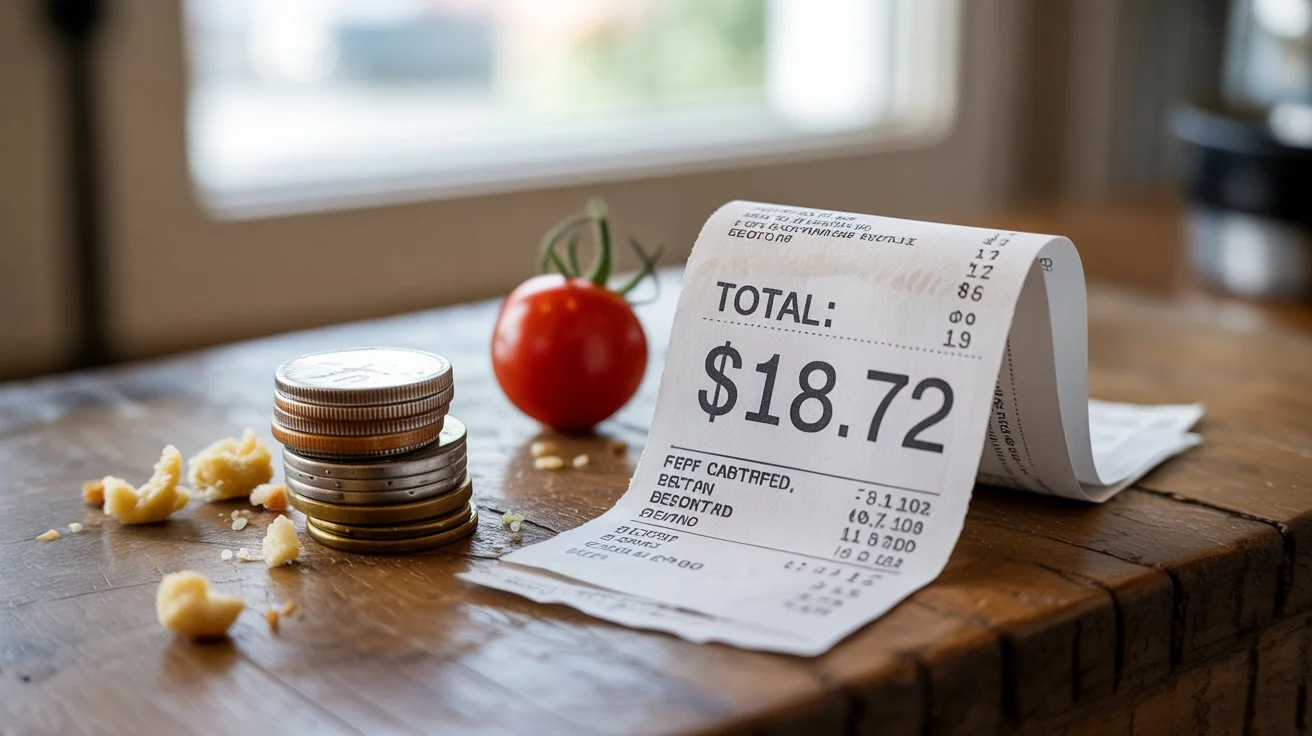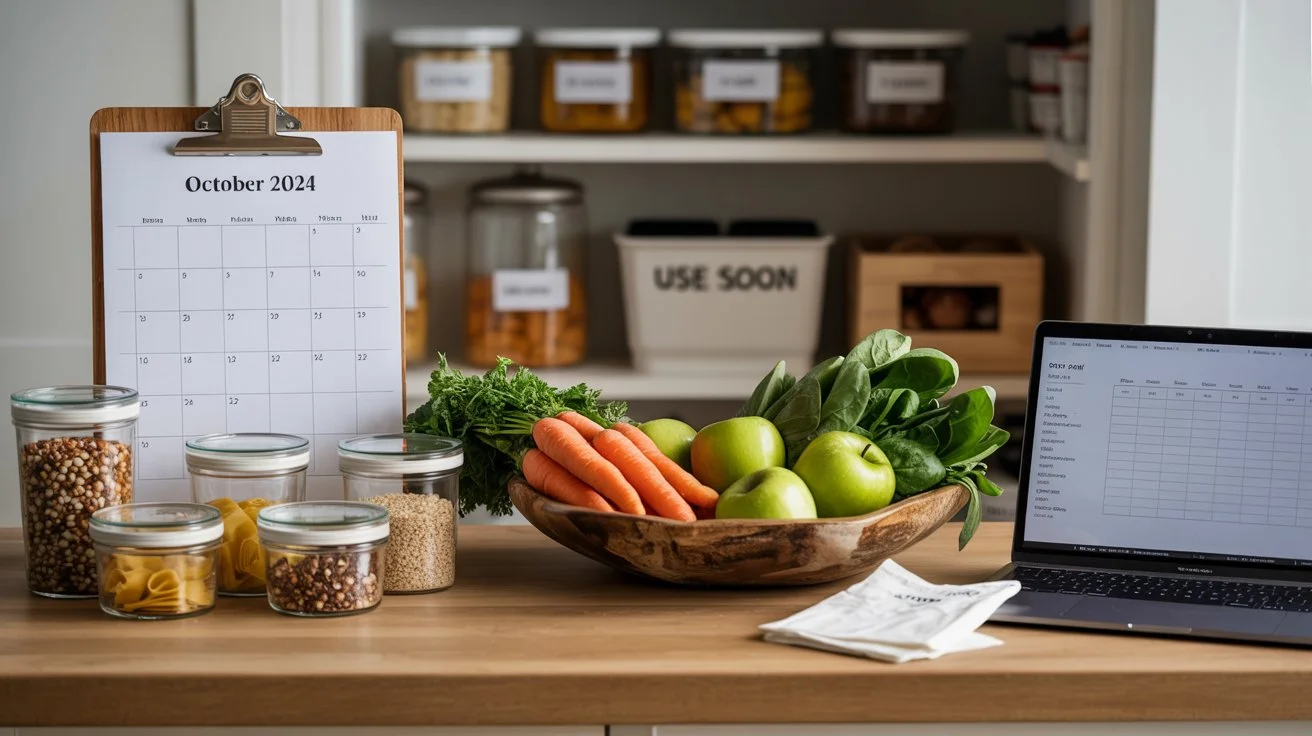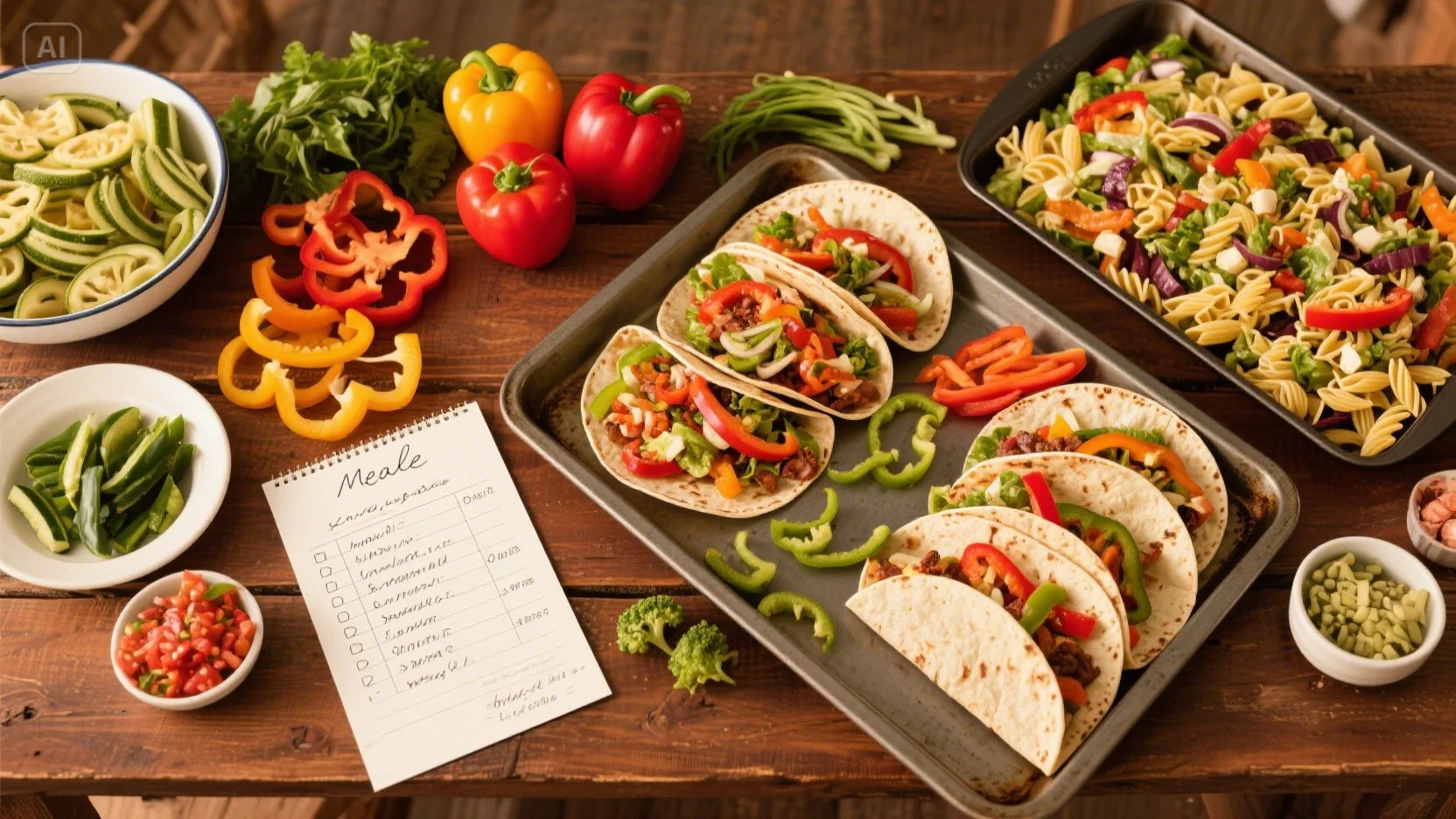Budget Meal Planning That Actually Saves You Money
Hey there, savvy home managers! Does your grocery bill feel like a runaway train? Are you watching food expire in the fridge or pantry and feeling that pang of wasted money? You’re definitely not alone!
Feeding ourselves and our families healthy, delicious meals is essential, but the cost of groceries can feel overwhelming. It’s easy to overspend or make choices that lead to wasted food and money. But what if you could gain control of your food spending and eat well? That’s the superpower of effective budget meal planning! It’s one of the most impactful things you can do to keep more cash in your pocket without sacrificing flavor or nutrition.
In this post, we’re diving deep into practical steps, smart strategies, and actionable budget meal planning ideas that will help you cut your grocery bill, make the most of your pantry, reduce food waste, and feel confident about your food budget. Get ready to save significant money!
Why Budget Meal Planning is Your Wallet’s Best Friend
Let’s talk about the tangible ways focusing on budget impacts your finances when you plan your meals. It’s more than just clipping coupons!
These benefits work together beautifully and tie directly into other areas of managing your home, like having a clear understanding of Your Pantry Inventory and practicing Smart Shopping habits.
Laying the Groundwork: Essential Steps Before You Plan Meals
You can’t build a sturdy house without a strong foundation. The same goes for a successful budget meal planning strategy! Here’s what to do before you even pick out a recipe or write a single meal down.

Step 1: Know What You Have (Your Pantry is Gold!)
This step is non-negotiable for budget planning! Why buy more if you already have it? Before you do anything else, take stock of your pantry, fridge, and freezer. What do you have on hand? What items are nearing their expiration date and need to be used?
You don’t need a fancy system to start. Just open the doors and take a look. Maybe jot down a quick list on a sticky note or your phone of key ingredients you discover. This prevents buying duplicates (how many times have you bought a can of diced tomatoes only to find three hidden in the back?!) and ensures you use ingredients before they expire. This step is so important for saving money and reducing waste, we have a whole post dedicated to How to Take a Pantry Inventory.
Step 2: Set a Realistic Grocery Budget
You need a target! If you don’t know how much you want to spend, it’s hard to know if your planning is working. How much are you aiming to spend on groceries each week or month?
If you’re not sure where to start, try tracking your current spending for a week or two to get a baseline. There are apps, spreadsheets, or just a simple notebook you can use. Remember that “budget” is personal – it’s not about deprivation, it’s about spending intentionally and aligning your spending with your financial goals.
Step 3: Check the Sales Flyers and Coupons
Before planning, see what’s on sale at the grocery stores you typically shop at. You can often find digital flyers online or use store apps. This is like getting a head start on savings!
Look for discounted proteins, produce, or pantry staples you regularly use. Then, actively plan meals around these discounted items. This one simple step can significantly lower your grocery bill. This is a fundamental tactic we discuss further in Smart Shopping section.
Step 4: Plan Your Meals (Based on Steps 1-3!)
Now you plan the meals! Look at your inventory list (Step 1) and the sales flyers (Step 3). What delicious, budget-friendly meals can you create using what you have and what’s on sale?
Start simple. Aim to plan for 5-7 dinners for the week. If you want to save even more, plan a couple of lunches or breakfasts too, especially if you tend to buy those daily.
Step 5: Create Your Smart Grocery List
Based only on your meal plan (Step 4) and what you don’t have in your pantry, fridge, and freezer (Step 1), write your grocery list. Prioritize adding the sale items you planned to use and any essential staples you genuinely need. This is your mission statement for the grocery store – stick to the list!
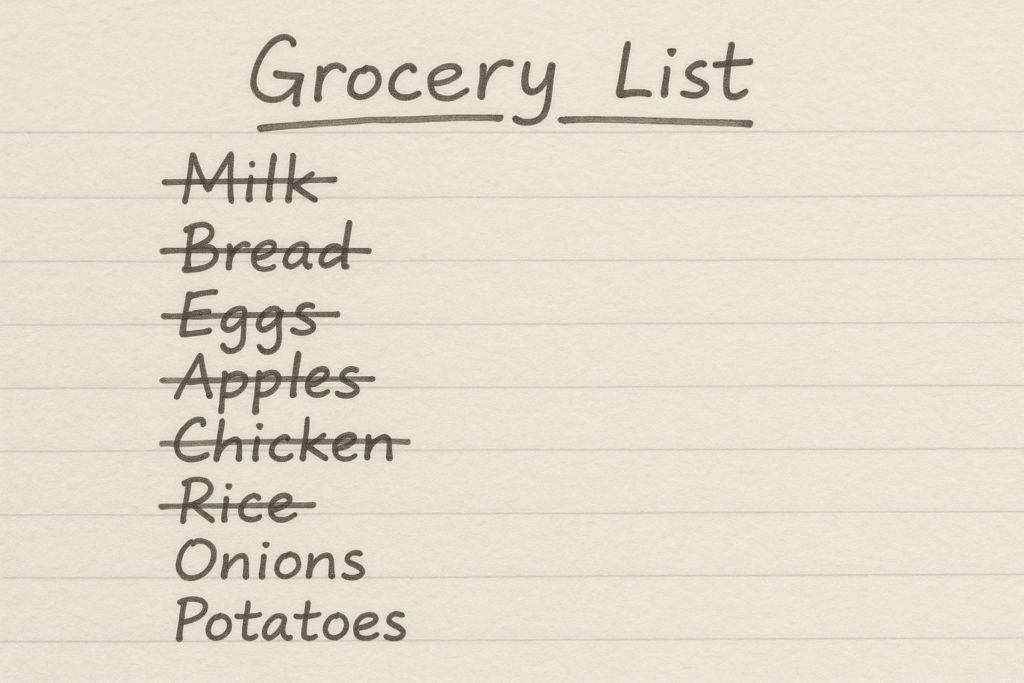
Savvy Strategies & Budget Meal Planning Ideas That Work
Ready for some concrete budget meal planning ideas and techniques to really stretch those dollars and make your plan a success? Let’s get strategic in the kitchen!
Strategy 1: Embrace the Power of Pantry Staples
These are the inexpensive, shelf-stable items you keep in your pantry – pasta, rice, beans, lentils, canned tomatoes, oats, etc. They’re the backbone of budget cooking because they’re cheap, versatile, and last a long time.
This is arguably the best budget strategy! It makes the most of your Pantry Inventory and highlights the value of a well-Organized Pantry. We share even more specific meal planning ideas for using what you have in our post all about Meal Planning with Pantry Staples.
Strategy 2: Become a Leftover Artist
Don’t let leftovers languish in the back of the fridge until they become science experiments! Plan for them deliberately. Turning tonight’s dinner into tomorrow’s lunch or the base for a new meal later in the week prevents boredom and ensures food gets eaten, saving you money.
This is crucial for minimizing food waste and a key component of Saving Money with Smart Shopping.
Strategy 3: Go Meatless (or Meat-Lite) More Often
Meat and poultry can be the most expensive items on your grocery bill. Incorporating more vegetarian or vegan meals, or simply using smaller portions of meat stretched with other ingredients, can significantly cut costs.
Strategy 4: Cook in Bulk and Batch Prep
When you’re already cooking, why not make extra? Cooking larger quantities of staples (like rice or grains) or full meals saves both time and money throughout the week. Buying ingredients in larger sizes can sometimes offer a per-unit discount.
Saves time for busy people and can be cheaper when buying ingredients in larger sizes. Remember to follow FoodSafety.gov’s guidelines for safe food storage when batch cooking to prevent spoilage.
Strategy 5: Smart Ingredient Swaps
Get creative with your ingredients! Learn how to substitute more expensive items with cheaper alternatives that achieve a similar result in your recipes.
Strategy 6: Make it From Scratch (Sometimes!)
You don’t have to make everything from scratch, but identifying items you frequently buy pre-made that are much cheaper (and often healthier) to make yourself can add up to significant savings over time.
Putting Your Budget Plan into Action: Your Simple Roadmap
Feeling ready to tackle that grocery bill? Here’s how to make budget meal planning a reality this week using the steps and strategies we’ve discussed:
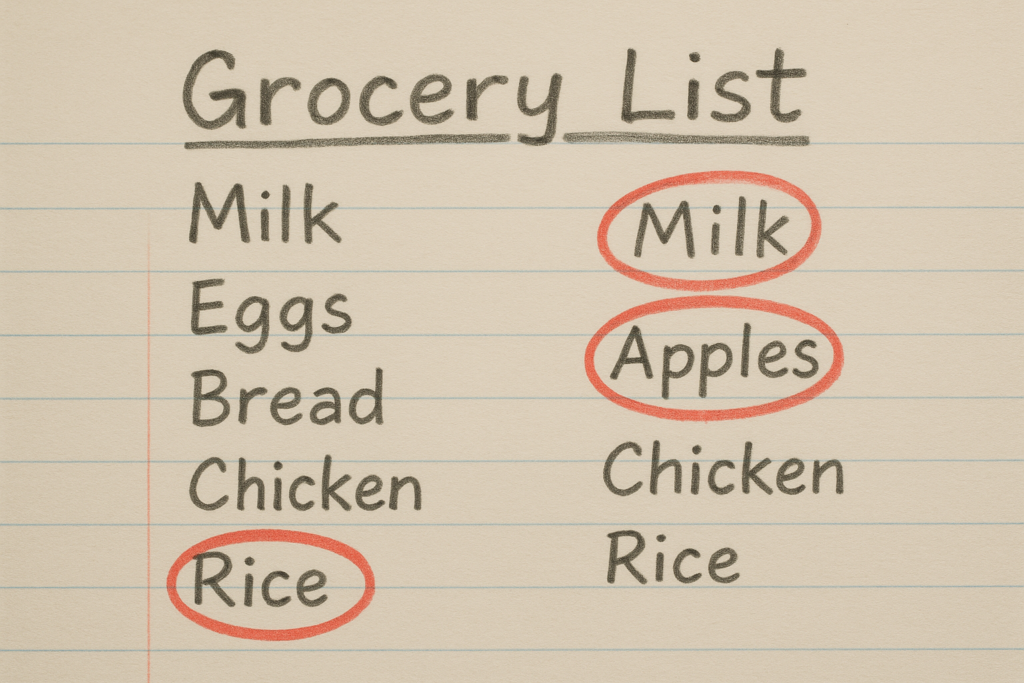
Common Budget Meal Planning Challenges (and How to Solve Them)
Even with the best intentions, budget meal planning can hit a few bumps in the road. Here are a few common hurdles you might face and how to handle them:
Your Budget Meal Planning Questions Answered
Still have questions about making budget meal planning work for you? Here are answers to some common queries:
Q: What are some examples of really cheap meals to start with?
A: Great question! Some inherently budget-friendly meals include lentil soup, rice and beans, pasta with simple tomato sauce, egg-based dishes like frittatas or scrambled eggs, and using cheaper protein sources like chicken thighs or ground meat stretched with veggies or grains. Building meals around pantry staples is key!
Q: How do I find cheap recipes that my family will actually eat?
A: Look for recipes that focus on budget-friendly ingredients like legumes, grains, and seasonal vegetables. Search for terms like “cheap dinner recipes,” “lentil recipes budget,” or “meals with pantry staples.” Involving your family in choosing from a few budget-friendly options can also help ensure they’ll eat them!
Q: How can meal planning help me stop buying impulse items at the grocery store?
A: When you have a clear meal plan and a grocery list based only on that plan and your existing pantry inventory, you go into the store with a purpose. You know exactly what you need, which makes it easier to walk past tempting (and often expensive) impulse buys in the aisles or at the checkout. Sticking to your list is your superpower!
Q: Is it always cheaper to buy in bulk for budget meal planning?
A: Buying in bulk can be cheaper per unit, but only if you will realistically use the entire large quantity before it spoils. It’s a great strategy for pantry staples like rice, pasta, dried beans, or items you freeze. However, for perishable goods, smaller quantities you’ll use up are often more budget-friendly in practice to avoid waste. Always consider if you have the Pantry Organization or storage space for bulk items!
Q: How can I effectively track my grocery spending to stay on budget?
A: There are several ways! You can use a simple notebook to write down your budget and spending, a spreadsheet on your computer or phone, or a budgeting app. The key is consistency – track every grocery expense for a few weeks to see where your money is going, then use your meal plan to guide future spending and compare it to your set budget.
Connecting Your Kitchen and Your Wallet
Mastering budget meal planning is a powerful step towards a more efficient and economical home! It doesn’t exist in a vacuum; it works best when it’s integrated with other smart kitchen habits.
Your budget meal plan relies heavily on knowing What’s In Your Pantry?. It’s much easier to save money when you use the food you already own! Keeping that pantry Organized means you can quickly identify ingredients and avoid buying duplicates. And effective meal planning is the cornerstone of Smart Shopping, helping you buy only what you need, reduce impulse buys, and save money at the store. These areas all work together for a smoother, more affordable kitchen!
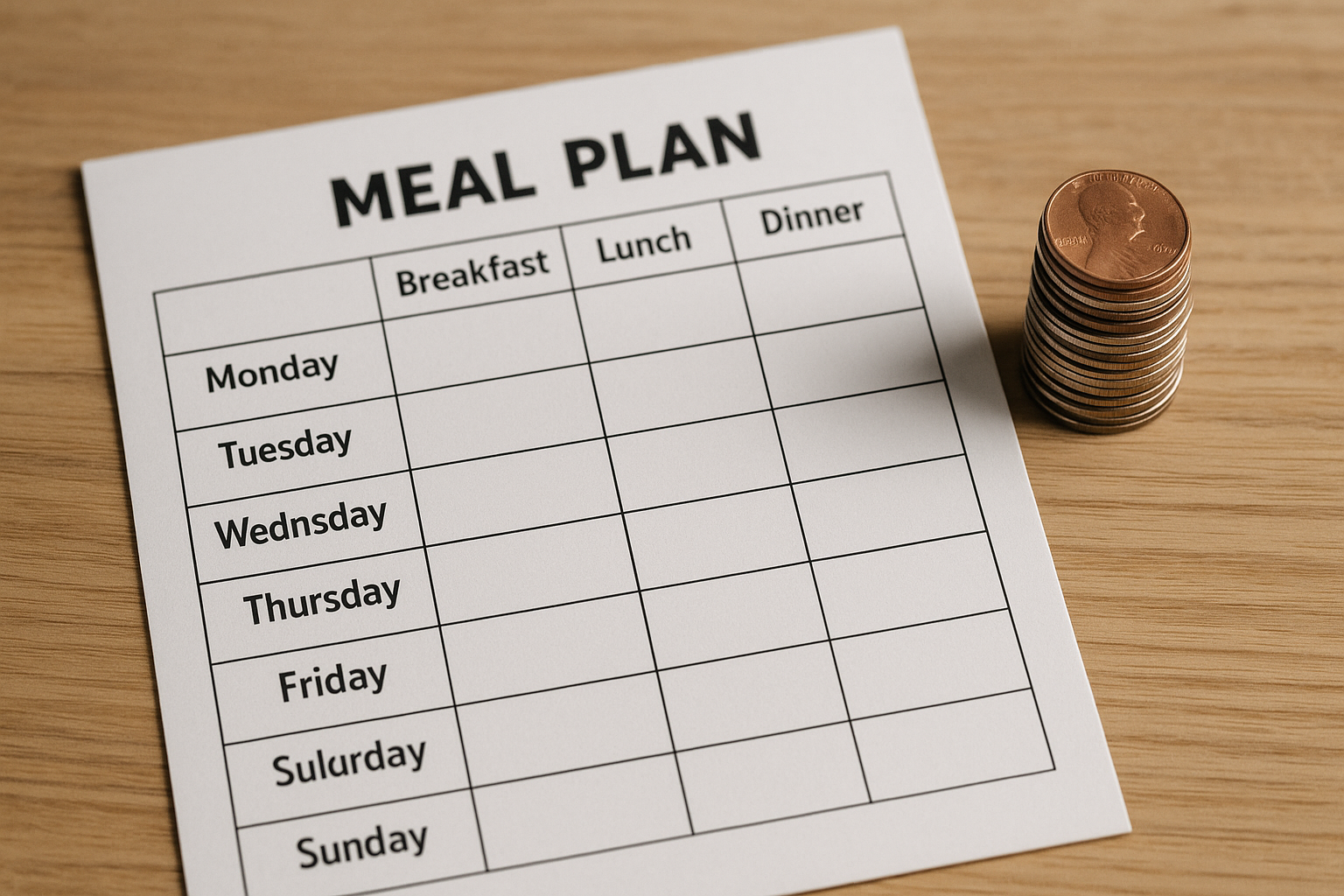
Conclusion
Taking on budget meal planning is one of the most impactful things you can do to improve your financial health and reduce stress in the kitchen. By being intentional with your planning, leveraging your pantry, smart shopping, and using creative strategies, you can significantly cut your grocery bill, minimize frustrating food waste, and still enjoy delicious, nourishing meals at home.
Don’t feel like you have to implement every strategy overnight. Start with one or two budget meal planning ideas that feel manageable for you this week, like checking your pantry before planning or incorporating an extra meatless meal. Every little bit helps, and you’ll see the savings add up!
What’s your go-to tip or favorite meal for saving money with meal planning? Share your ideas in the comments below!

